Opioid rehab programs usually last between 30 to 90 days, depending on the severity of someone’s addiction, and what other diagnoses they may have.
What are Opioids?
Opioids are a class of analgesic drugs that are either made directly from the opium poppy or created in a lab to resemble the same chemical structures found in the opium poppy. These drugs are incredibly effective at helping to control severe or chronic pain that often cannot be managed effectively in other ways. The reason that prescription opioids are so effective is also the reason they are so addictive. Opioid overdose is at an all-time high, as well.
For additional information on opioids, see a report from SAMHSA called Why do Adults Misuse Prescription Drugs? Policymakers can use this information from the National Survey on Drug Use and Health to help inform substance abuse prevention and treatment needs in their communities. Understanding the Opioid Epidemic(Centers for Disease Control and Prevention) is also a good resource for more information.
What are the Signs of Opioid Addiction?
The signs of opioid abuse, or opioid use disorders, are relatively easy to spot in someone who has a developing addiction. However, those who have been struggling with their addiction for a longer period have likely become much better at hiding the signs. Here are some of the signs you might see in someone after they’ve recently abused opioids:
-
Flushed appearance
-
Blissful or euphoric attitude
-
Incoherent or slurred speech
-
Difficulty forming thoughts or ideas
-
Drowsiness, even nodding off in the middle of activities
-
Itching sensations
-
Depressed heart rate
-
Depressed respiration
What Should You Expect From Opioid Addiction Treatment Programs?
Initially, the individual will go through intake and admissions, where they’ll receive a comprehensive evaluation of their health as well as their addiction profile. Then they will begin the detox process, which may include medication-assisted detox, which can ease the cravings and other symptoms. Another medication that may be used is methadone.
Methadone has been used over the last 40 years to treat withdrawal symptoms and following medical detox. It binds to the opioid receptors in the brain typically eliminating withdrawal symptoms without causing euphoria. Methadone has been less effective as it can only be prescribed in specific clinics and can be addictive.
Once the detox stage is over, the patient will be able to take part in many different types of therapy, counseling, group activities, and more. When the inpatient program is completed, the next stage of recovery can begin, often with outpatient treatment and continued care.
How Long Does Opioid Rehab Last?
One of the first concerns for those seeking to enter a local rehab for opioid treatment in New York is how long it will last. The most common answer is that it is going to be an ongoing effort on the individual’s part to maintain their recovery. Entering into inpatient opioid rehab may only take 30 to 90 days to complete, but that doesn’t mean the individual is fully cured.
Following inpatient treatment, there is a range of aftercare measures and continuation of care programs that ensure those recovering from addiction have the support they need. This includes outpatient treatment, medication, support groups, psychotherapy, and more. Active treatment can continue for a year or more following the completion of the detox and acute withdrawal stage.
Opioid Withdrawal Timeline
The opioid withdrawal timeline can be different for each individual, but opting for medication-assisted detox can make the detox and withdrawal period much more comfortable. That said, if you choose to detox from opiates rather than opt for medication-assisted treatment, it’s important to understand that detox is not addiction treatment and does very little to address the critical issues behind compulsive drug abuse. According to the National Institute on Drug Abuse’s Principles of Effective Treatment, addiction is far more complex than physical dependence. It requires comprehensive treatment that involves a variety of therapies to help people end their addiction for the long term, restore function to their lives and find purpose and meaning in a life free of substance abuse.
The withdrawal process will happen in stages, and the overall duration of the detox and acute withdrawal stage will often be about 7-10 days. Here is what that week might look like for the average individual:
-
6 hours to 24 hours after the last dose: Depending on the type of opioids that were being abused, the withdrawal symptoms can start in as little as 6 hours following the final opioid dose. This can bring along fits of anxiety or panic, intense drug cravings, intestinal disruption and diarrhea, aches and pains, tremors, and insomnia.
-
1-3 days: The physical and emotional symptoms of acute opioid withdrawals will continue to intensify over the next few days, commonly peaking around 3 days. While the initial symptoms intensify, new symptoms will appear as well, such as emotional instability, irritability, increased abdominal discomfort and cramping, nausea, vomiting, diarrhea, and intense fatigue.
-
Day 4+: Once the symptoms have reached their peak about three days in, many of the most uncomfortable or even painful physical symptoms will begin to subside and eventually fade away. By 7-10 days, the acute withdrawal stage can be considered essentially complete. The remaining symptoms will largely be psychological, such as depression.
Addiction Treatment Timeline
The addiction treatment timeline will generally depend on the length of the treatment program that the patient has opted for. Short-term programs will only be 30 days or less, but long-term programs of 90 days or even more can give the patient much more time to focus on integrating all they’ve learned in recovery, into their lives.
Aftercare Timeline
The aftercare timeline will be highly dependent on the patient’s needs once they leave inpatient or outpatient care. Aftercare will also depend on the amount of time the individual can commit to it, in some cases, they may only need a few hours each week, while in other cases it may be more significant. A strong aftercare plan is the key to long-term recovery from opioid dependency and addiction.
Getting Help for Opioid Addiction
If you or someone you care about has been struggling with opioid addiction, there is no better time to reach out. It’s easy to find a medical detox program for opioids that can create a personalized recovery plan. Many health insurance plans have addiction treatment covered, also. A better tomorrow can start right now.


